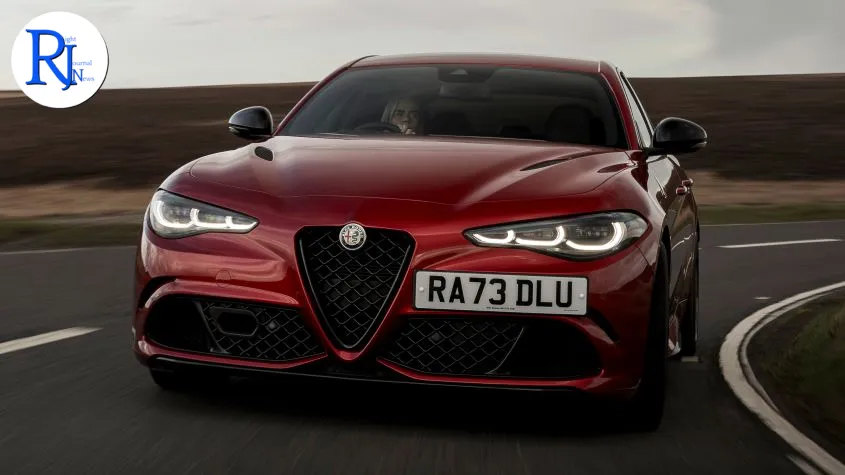Alfa Romeo has announced that its latest models, the Giulia and Stelvio Quadrifoglio, will continue to feature petrol engines, marking a significant deviation from the automotive industry’s rapid shift towards electric vehicles. This decision comes after Alfa’s reassessment of market demands and customer preferences, highlighting a sustained desire for traditional petrol power. The announcement has been warmly received by enthusiasts who cherish the driving dynamics and character of petrol engines.
The Italian automaker’s pivot reflects broader trends in consumer behaviour, underscoring that not all drivers are ready to transition to electric vehicles. Alfa Romeo’s decision to maintain petrol power in these high-performance models suggests a strategic move to cater to a niche yet passionate segment of the market that values performance and heritage over emerging technology.

Timing and Location of the Decision
The announcement was made on 21st March 2025, during a press briefing held at Alfa Romeo’s headquarters in Turin, Italy. This decision comes after months of speculation regarding the future direction of the brand, particularly in light of increasing environmental regulations and the industry’s push towards electrification.
Alfa Romeo’s decision is timely as the automotive world grapples with balancing regulatory pressures with consumer demand. By choosing to retain petrol engines, Alfa Romeo is betting on the continued appeal of traditional driving experiences, even as it acknowledges the importance of evolving towards sustainable solutions in the future.
Market Dynamics and Consumer Preferences
Alfa Romeo’s decision to stick with petrol engines for its Giulia and Stelvio Quadrifoglio models is rooted in market research and consumer feedback. According to industry experts, while electric vehicles (EVs) are gaining popularity, a significant portion of consumers still prefer the performance and feel of petrol-powered cars. This segment includes driving enthusiasts who value the sound, power delivery, and overall experience that petrol engines provide.
Alfa Romeo’s research indicates that while there is growing interest in EVs, the demand for high-performance petrol models remains robust. This is particularly true in markets where infrastructure for electric vehicles is still developing, and consumers are hesitant to fully commit to the electric shift. By continuing to offer petrol-powered models, Alfa Romeo aims to satisfy this demand and maintain its loyal customer base.
Industry Impact and Strategic Implications
The decision by Alfa Romeo to continue producing petrol-powered vehicles could have broader implications for the automotive industry. With many manufacturers shifting their focus to electric vehicles, Alfa Romeo’s approach highlights the potential for a diversified strategy that incorporates both traditional and modern technologies. This could influence other automakers to reconsider their electrification timelines and product offerings.
Industry analysts note that Alfa Romeo’s strategy could serve as a case study for balancing innovation with tradition. By catering to petrol enthusiasts while gradually incorporating electric options, automakers can potentially maximise market reach and accommodate a wider range of consumer preferences. This approach allows brands to stay relevant and competitive in a rapidly changing industry landscape.
Expert Insights and Future Prospects
Automotive experts have weighed in on Alfa Romeo’s decision, offering insights into the potential long-term effects. Some experts argue that maintaining a petrol lineup could strengthen Alfa Romeo’s brand identity, which is deeply rooted in performance and driving pleasure. This could enhance the brand’s appeal to younger consumers who are drawn to the emotional aspects of driving.
Looking ahead, Alfa Romeo is expected to gradually introduce hybrid and electric models, aligning with global sustainability goals. However, the retention of petrol engines in their flagship models suggests a commitment to preserving the essence of the brand. This dual approach may position Alfa Romeo favourably as a brand that honours its heritage while embracing future technologies.
Conclusion: Balancing Tradition and Innovation
Alfa Romeo’s decision to keep petrol engines in its Giulia and Stelvio Quadrifoglio models highlights a strategic balancing act between tradition and innovation. As the automotive industry evolves, Alfa Romeo’s approach of catering to diverse consumer preferences could serve as a blueprint for other brands navigating the electrification landscape. By honouring its performance-driven heritage while preparing for future advancements, Alfa Romeo aims to satisfy both traditional enthusiasts and modern consumers. As the industry continues to transform, Alfa Romeo’s strategy will be closely watched as a potential model for maintaining brand identity amidst technological change.

